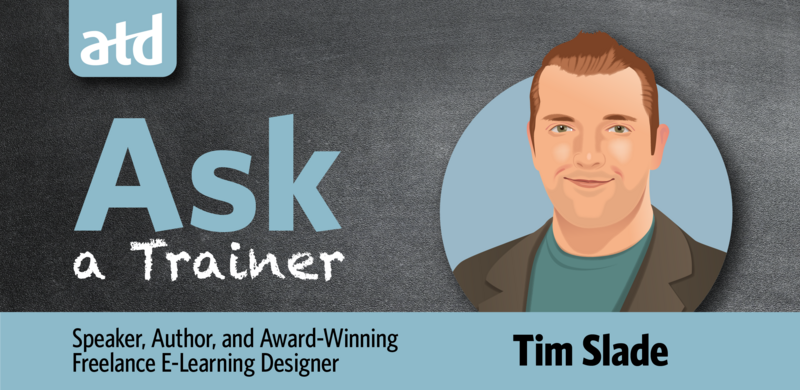ATD Blog
Ask a Trainer: Getting Started With Accessibility for E-Learning
Tue Nov 09 2021

Hi Tim,
I’m an instructional designer and recently have been asked to start developing e-learning content. While I’ve created instructional videos, interactive e-learning is new to me. It’s become increasingly important for our organization to ensure our e-learning content is accessible, which I think is great; however, as I start to research the ins and outs of creating accessible e-learning content, I’m getting overwhelmed with all the rules and guidelines.
What are some basics I should know about creating accessible e-learning?
Thanks for reaching out! First, good for you and your organization for investing the time and consideration for creating accessible e-learning content. It’s incredibly important, and it’s our job to ensure our digital learning content is easily accessible to all our learners.
Accessibility can be overwhelming depending upon the guidelines you’re researching. If you’re looking at the Section 508 or WCAG guidelines, they mostly reference guidelines that apply to websites. As a result, it’s not always easy to interpret how these guidelines apply when designing interactive e-learning with tools like Articulate Storyline, Adobe Captivate, Lectora, or Rise.
So, how can you get started with creating accessible e-learning content that meets some minimum requirements? Here are my top tips:
#1: Learn the Accessibility Features of Your E-Learning Authoring Tool
My first tip is to take some time to learn what accessibility features your e-learning authoring tool has available. Accessibility is a huge topic right now, so all of the major e-learning authoring tools, including Articulate Storyline, Adobe Captivate, Lectora, and Rise, offer dedicated pages to explain their accessibility features. Spend some time to see what your tool is and is not capable of. Remember: no tool is going to cover all accessibility needs.
#2: Start With the Accessibility Basics
My second recommendation is to start with the minimum basics, which include closed captioning, ALT text, and tab order. If you can incorporate these basic features into your e-learning courses, it’ll at least help you get started.
Here are some quick definitions:
Closed captioning. This on-screen text can be toggled on and off so that learners with hearing impairments can read text that is synced with the audio narration.
ALT text. This descriptive text is added to images, graphics, and other elements for learners with vision impairments via a screen reader.
Tab order. This is the order in which on-screen elements and interactive objects are selected for those learners navigating your course with a keyboard or screen reader.
#3: Test for Accessibility
My third and final tip is to test your courses for accessibility. I’m a huge proponent of user-acceptance testing, which is when you recruit the help of your target audience to help you test your courses. If possible, connect with those learners who may benefit from some of the accessibility features I mentioned above and ask them to help you test your courses. This can help you gain valuable insight into their specific needs.
I hope some of these tips can help you get started with some of the basics of accessibility for e-l-learning. While this doesn’t cover everything you need to know, it’s a good place to get started.
Best of luck!
Tim
Do you have a learning question you’d like me to tackle? You can email them to [email protected]. Also, visit the Ask a Trainer Hub to check out all your questions and my answers.
We welcome your comments and engagement on these posts. All posts are reviewed to ensure appropriateness based on ATD’s requirements for postings in our online communities.
Please note: content shared in this column is provided by the author and may not reflect the perspectives of ATD.

